Published
- 16 min read
Top Deployment Tools in DevOps for Efficient Workflows

Key Highlights
- Deployment tools in DevOps are crucial for automating software releases, enhancing efficiency, and minimising manual errors.
- Choosing the right automation tools depends on integration with CI/CD pipelines, scalability, and security features.
- Top deployment tools include Kuberns, Octopus Deploy, GitLab CI/CD, and ArgoCD, each offering unique strengths for different workflows.
- Many DevOps teams are shifting from multiple disjointed tools to integrated platforms to simplify workflows and enhance collaboration.
- Effective tool selection accelerates continuous delivery and improves overall code quality in various cloud environments.
Introduction
Efficient deployments are central to the success of modern DevOps practices. As software delivery cycles shorten, businesses need reliable methods to move applications from development to production without delays or errors. Manual deployment approaches are no longer practical at scale, and fragmented toolchains often introduce unnecessary complexity. This is why deployment tools in DevOps have become critical, providing automation, consistency, and governance across the entire delivery pipeline.
These tools not only accelerate release cycles but also reduce downtime, improve collaboration between development and operations teams, and ensure compliance with security standards. From managing multiple environments to enabling advanced strategies like blue-green and canary deployments, the right deployment solution directly influences a team’s ability to maintain performance and stability.
For teams evaluating their options, our guide on Best Software Deployment Tools offers a detailed comparison.
In this article, we will build on that foundation to examine what deployment tools do, how they fit into the DevOps lifecycle, and which platforms are leading in 2025.
Understanding Deployment Tools in DevOps
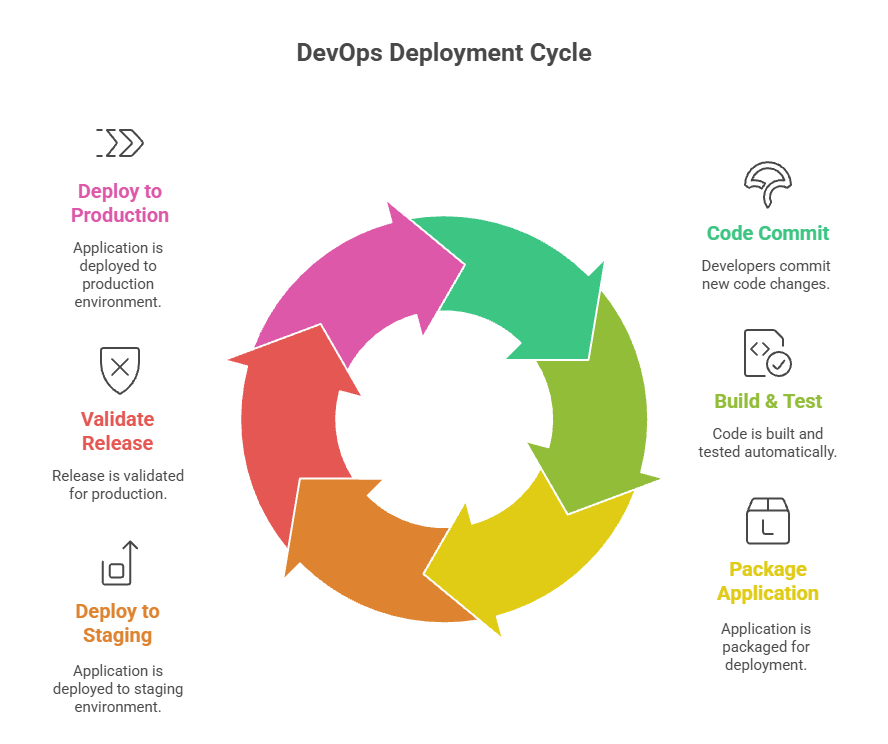
At their core, deployment tools are the engines that power automated software delivery. They bridge the gap between writing code and making it available to your users, replacing manual, repetitive tasks with structured and scalable processes. This automation is a cornerstone of modern DevOps practices like continuous integration and continuous deployment.
By connecting to your version control systems, these tools ensure that every code change is handled consistently. This guide will explore what these tools do, how they fit into the DevOps lifecycle, and the key differences between various types of deployment automation.
Defining Deployment Tools: What Do They Do?
So, what exactly do these deployment tools accomplish? Their primary function is to automate the process of software deployment. This includes everything from provisioning and configuring servers to deploying new code and managing infrastructure. They serve as essential automation tools that take on the repetitive tasks that often lead to human error.
Think about the manual steps involved in a typical deployment: logging into servers, copying files, restarting services, and running configuration scripts. A deployment tool automates this entire sequence, ensuring each step is executed flawlessly every time. This consistency is critical for maintaining stable development, staging, and production environments.
The Role of Deployment Tools in the DevOps Lifecycle
Deployment tools are a critical component throughout the entire DevOps lifecycle, acting as the connective tissue between different phases. Their journey begins right after a developer commits new source code. In a continuous integration (CI) setup, this action can automatically trigger a build and a series of tests.
Once the code passes these initial checks, the deployment tool takes over for the continuous delivery (CD) phase. It packages the application and deploys it to a staging environment for further testing. After validation, the same tool can promote the release to the production environment, making it live for users. This automated handoff ensures a smooth and predictable flow from code creation to final delivery.
By automating these transitions, deployment tools eliminate manual handoffs and reduce the risk of errors. They create a reliable and repeatable pipeline that allows your team to release software on demand, shorten feedback loops, and improve overall product quality.
What are the essential Criteria for Choosing Deployment Tools in DevOps?
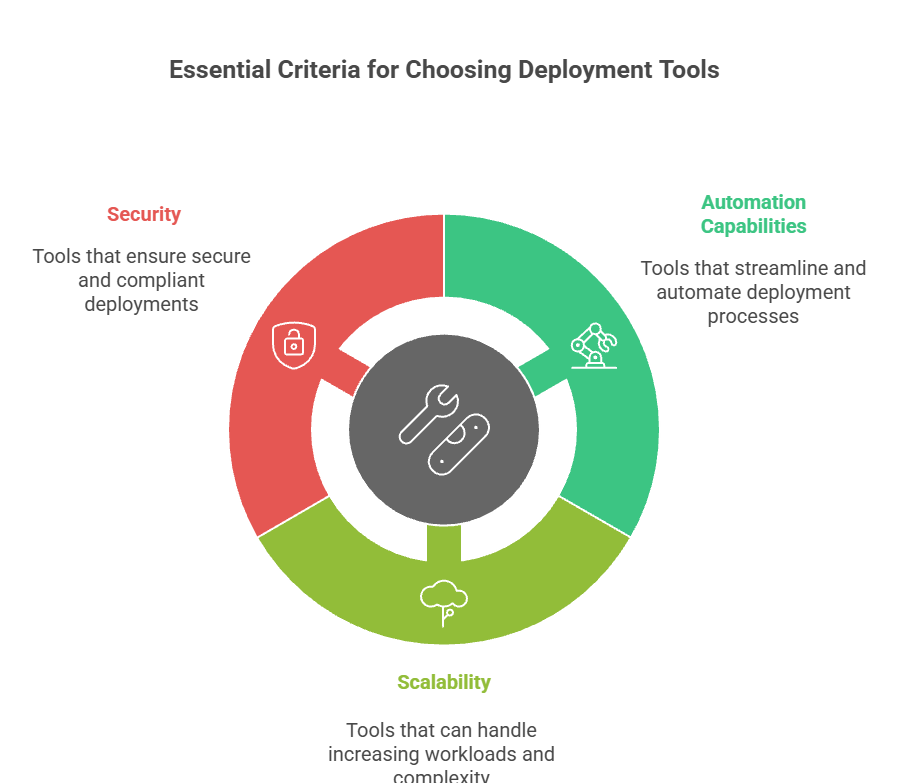 Selecting the right deployment tools for your team is a critical decision that can significantly impact your workflow efficiency and scalability.
Selecting the right deployment tools for your team is a critical decision that can significantly impact your workflow efficiency and scalability.
The ideal tool should not only automate tasks but also align with your team’s skills, existing technology stack, and long-term goals. It’s about finding a solution that fits seamlessly into your environment, considering various use cases, rather than forcing you to adapt to its limitations.
When evaluating options, you should consider several key factors, including how well a tool integrates with your CI/CD pipelines, its automation capabilities, and its features for security and compliance.
These criteria will help you build a robust and future-proof DevOps platform.
Automation Capabilities and Workflow Support
Beyond basic deployment, the best automation tools offer robust workflow automation features that can be customised to your team’s specific needs.
Can the tool handle complex, multi-stage deployments? Does it support advanced strategies like blue-green or canary releases out of the box? These are important questions to ask.
Effective deployment automation should reduce the cognitive load on your DevOps team. The tool should manage environment consistency, enforce policies, and provide clear visibility into the deployment process. Look for features like visual pipeline editors, reusable configuration templates, and automated rollback capabilities.
Your goal is to find a tool that not only automates tasks but also orchestrates your entire release process. This level of support helps align development and operations teams, ensuring everyone is working from a single source of truth and a standardised workflow.
Scalability, Security, and Compliance Features
As your organisation grows, your deployment needs will become more complex. Therefore, scalability is a non-negotiable feature. The tool you choose must be able to handle an increasing number of applications, environments, and deployments without performance degradation. It should support your cloud infrastructure, whether you’re on a single cloud provider or managing a multi-cloud or hybrid environment.
Security and compliance are equally critical. A good deployment tool integrates security directly into the pipeline, a practice known as DevSecOps. It should help you enforce policies and maintain a secure software supply chain.
Key security features to look for include:
- Role-Based Access Control (RBAC): Ensures that team members only have permissions relevant to their roles.
- Secrets Management: Securely stores and manages API keys, passwords, and certificates.
- Audit Trails and Vulnerability Management: Provides logs of all deployment activities and integrates with scanning tools to catch vulnerabilities early.
Top Deployment Tools in DevOps (2025 Edition)
With a clear understanding of what to look for, it’s time to explore some of the best DevOps deployment tools available today, particularly in the realm of cloud computing. The market is filled with options, each catering to different needs, from simple CI/CD automation to complex multi-cloud continuous delivery. The right DevOps tool for you will depend on your team’s size, technical expertise, and specific workflow requirements.
Here is a curated list of top deployment tools that are shaping efficient DevOps workflows in 2025. This selection includes modern integrated platforms, specialised release management systems, and flexible automation servers.
Kuberns: The Modern Alternative to Complex Toolchains
 Managing separate deployment tools for CI/CD, infrastructure, and scaling creates unnecessary complexity and slows down development.
Managing separate deployment tools for CI/CD, infrastructure, and scaling creates unnecessary complexity and slows down development.
Kuberns addresses this challenge by providing a modern, integrated platform that automates these processes in one place. Your team no longer needs to juggle multiple automation tools just to deploy and maintain applications in cloud environments.
With Kuberns, your pipelines can trigger builds, tests, and deployments automatically, significantly reducing manual steps and lowering failure rates. It’s designed for cloud-native applications and microservices, where interconnectedness and built-in scaling are essential.
Simply push your code, and Kuberns handles the rest. This approach represents the shift away from fragmented toolchains toward a unified platform that accelerates development and reduces operational overhead, making it one of the Best Software Deployment Tools in 2025.
Octopus Deploy: Advanced Release Management
 Octopus Deploy is a powerful platform specialising in release management and deployment automation. It is designed to handle complex deployment scenarios with ease, giving you granular control over how your software is released across various environments.
Octopus Deploy is a powerful platform specialising in release management and deployment automation. It is designed to handle complex deployment scenarios with ease, giving you granular control over how your software is released across various environments.
Its main strength lies in its ability to model your release process, from development and testing all the way to production.
With a focus on repeatability and reliability, Octopus Deploy excels at environment management. You can define your infrastructure and deployment targets, ensuring that releases are consistent every time. It supports advanced deployment patterns like blue-green and canary deployments, helping you release with confidence and minimise risk. This makes it an excellent choice for teams that need robust control over their deployment automation workflows.
For organisations that require a dedicated tool for orchestrating complex releases across on-premises servers and cloud platforms, Octopus Deploy provides the visibility and control needed to succeed.
GitLab CI/CD: Integrated Workflow Automation
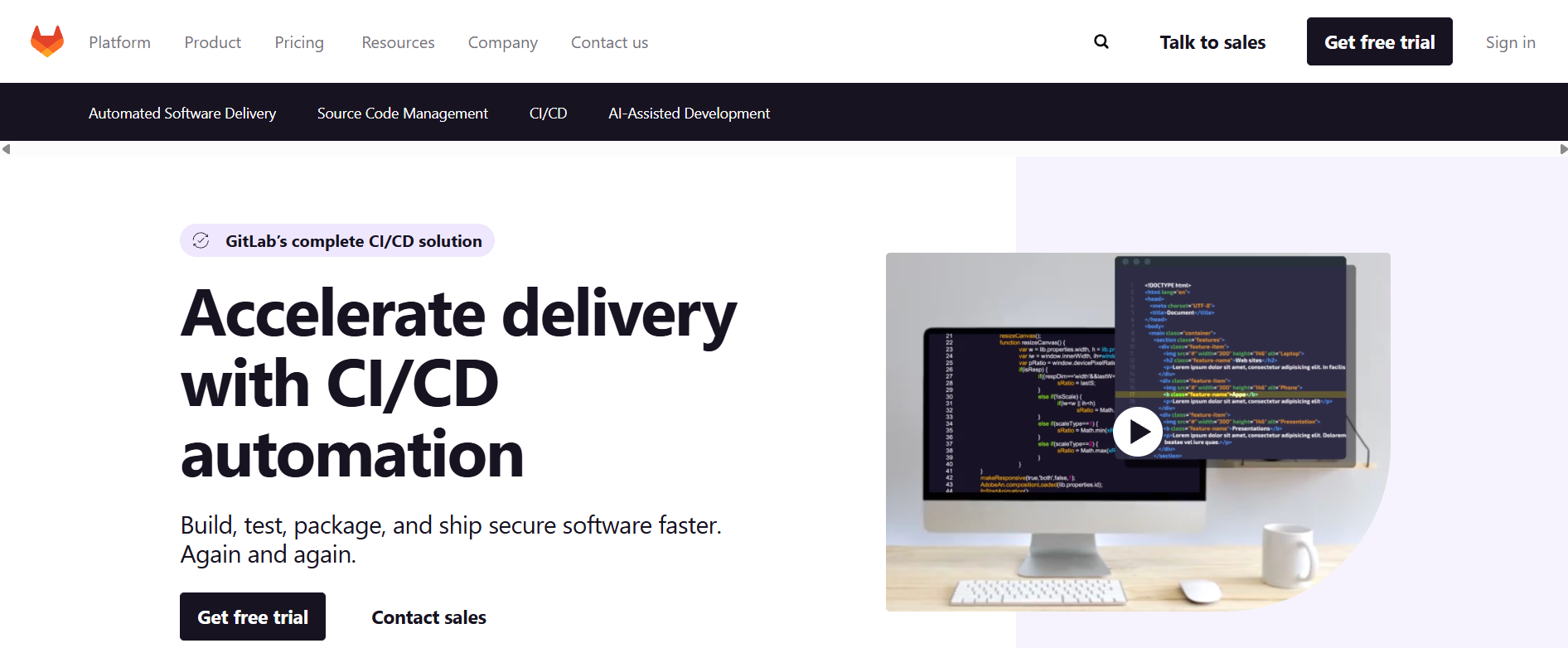 For teams already using GitLab for version control, GitLab CI/CD offers a seamless and powerful solution for workflow automation. Because it’s fully integrated into the GitLab platform, you can manage your code, CI/CD pipelines, and code review processes, including Bitbucket pipelines, all in one place.
For teams already using GitLab for version control, GitLab CI/CD offers a seamless and powerful solution for workflow automation. Because it’s fully integrated into the GitLab platform, you can manage your code, CI/CD pipelines, and code review processes, including Bitbucket pipelines, all in one place.
This tight integration eliminates the need to configure and maintain connections with external CI/CD tools.
GitLab CI/CD uses a simple YAML file (.gitlab-ci.yml) in your repository to define your pipelines. This approach, known as “pipelines as code,” makes your build, test, and deployment processes versionable and easy to manage.
With built-in container registry and Kubernetes integration, GitLab CI/CD is another good choice for teams looking for an all-in-one platform. It simplifies the toolchain and helps you achieve continuous deployment by automating every step from commit to production.
CircleCI: Rapid and Reliable Deployments
 CircleCI is a popular cloud-based CI/CD platform known for its speed, reliability, and ease of use. It is designed to help teams automate their build, test, and deployment processes, enabling rapid deployment cycles.
CircleCI is a popular cloud-based CI/CD platform known for its speed, reliability, and ease of use. It is designed to help teams automate their build, test, and deployment processes, enabling rapid deployment cycles.
Its simple configuration and powerful features make it a favourite among developers working on projects of all sizes.
One of CircleCI’s standout features is its support for parallel test automation, which can dramatically reduce the time it takes to get feedback on your code changes. It integrates seamlessly with GitHub and Bitbucket and offers excellent support for Docker, making it ideal for teams building containerised applications. The platform automatically scales to handle your workload, so you don’t have to worry about managing build infrastructure.
For teams prioritising speed and efficiency in their continuous integration and deployment pipelines, CircleCI provides the tools to move quickly without sacrificing quality. Its performance-optimised environment helps you ship code faster and more reliably.
ArgoCD: GitOps for Kubernetes Environments
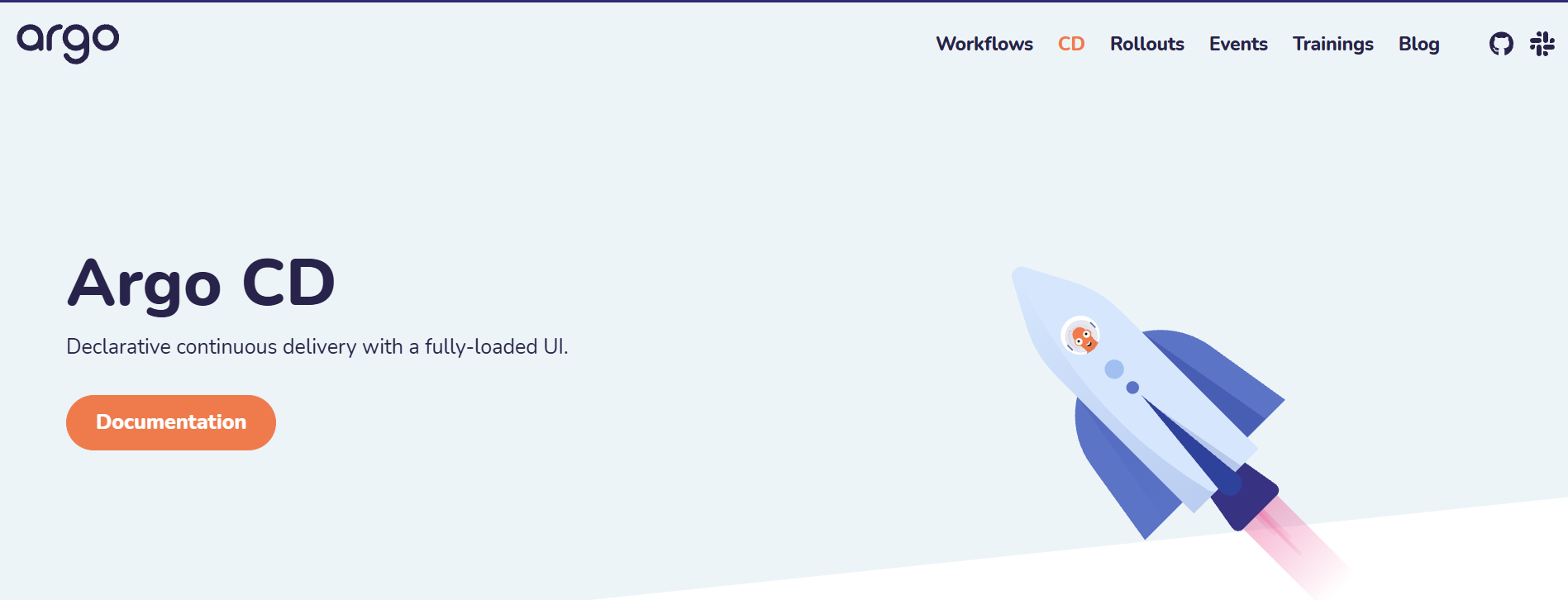 ArgoCD is a declarative, GitOps-based continuous delivery tool specifically designed for Kubernetes. The core idea behind GitOps is to use a Git repository as the single source of truth for defining the desired state of your applications and infrastructure. ArgoCD automates the process of ensuring that your live environment matches the state defined in Git.
ArgoCD is a declarative, GitOps-based continuous delivery tool specifically designed for Kubernetes. The core idea behind GitOps is to use a Git repository as the single source of truth for defining the desired state of your applications and infrastructure. ArgoCD automates the process of ensuring that your live environment matches the state defined in Git.
With ArgoCD, your entire deployment pipeline is managed through pull requests and code reviews. When you update the configuration in your Git repository, ArgoCD automatically detects the change and applies it to your Kubernetes cluster. This provides a clear audit trail and makes it easy to roll back to a previous state if something goes wrong.
For teams that have fully embraced Kubernetes, ArgoCD is an essential tool for automating deployments in a reliable and transparent way. It simplifies cluster management and enforces consistency across all your environments.
Spinnaker: Multi-Cloud Continuous Delivery
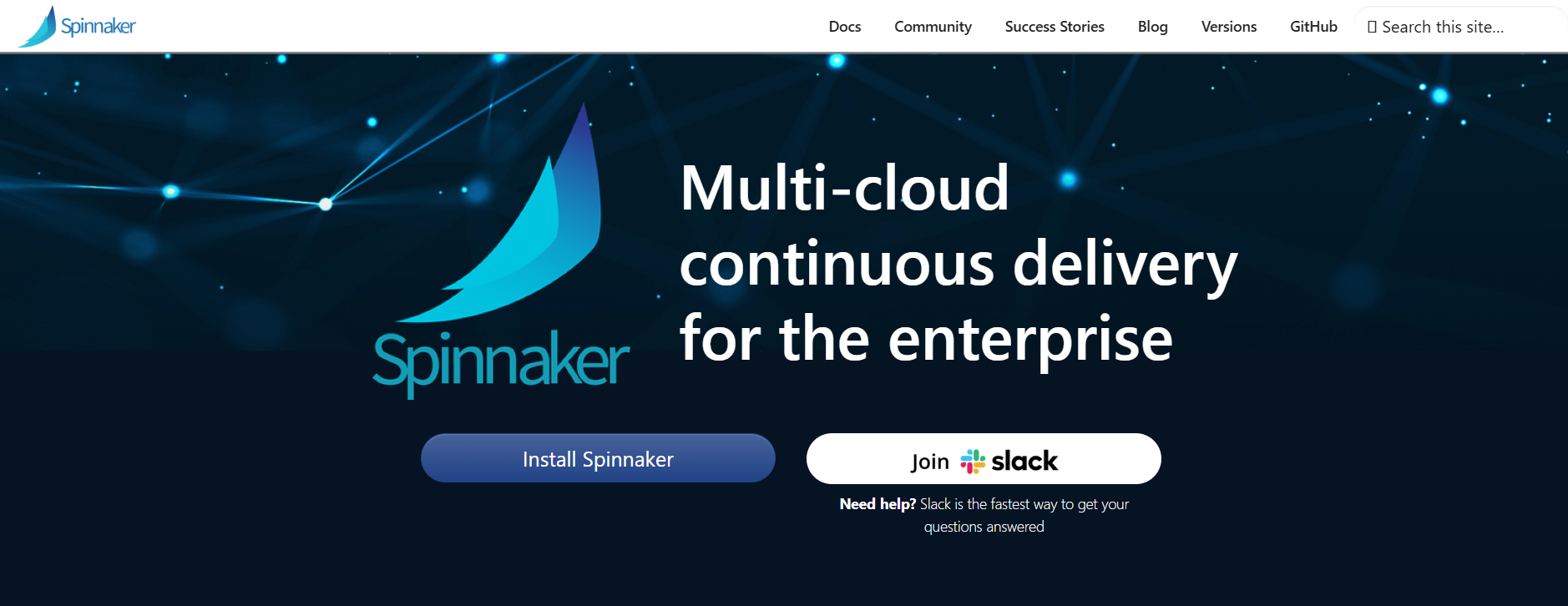 Originally created by Netflix, Spinnaker is an open-source, multi-cloud continuous delivery platform built for releasing software changes with high velocity and confidence. It is designed to handle the complexities of deploying applications across multiple cloud providers, including AWS, Google Cloud, and Azure, as well as Kubernetes.
Originally created by Netflix, Spinnaker is an open-source, multi-cloud continuous delivery platform built for releasing software changes with high velocity and confidence. It is designed to handle the complexities of deploying applications across multiple cloud providers, including AWS, Google Cloud, and Azure, as well as Kubernetes.
Spinnaker’s strength lies in its powerful and flexible pipeline management capabilities. It allows you to create sophisticated deployment strategies like blue-green, canary, and rolling updates with ease. This helps you minimise downtime and reduce the risk associated with new releases. The platform provides a global view of all your deployments, making it easier to manage applications across different cloud environments.
For large enterprises or teams operating in a hybrid or multi-cloud world, Spinnaker offers a robust solution for standardising the release process. It enables safe, reliable, and repeatable deployments at scale, regardless of where your applications are running.
Jenkins: Longstanding automation server with high flexibility
 Jenkins is a highly extensible, open-source automation server that has been a cornerstone of open DevOps for years. Its flexibility and massive plugin ecosystem make it one of the most popular and versatile tools for building CI/CD pipelines using various programming languages.
Jenkins is a highly extensible, open-source automation server that has been a cornerstone of open DevOps for years. Its flexibility and massive plugin ecosystem make it one of the most popular and versatile tools for building CI/CD pipelines using various programming languages.
With over a thousand plugins available, Jenkins can integrate with virtually any tool or service in your development stack.
This high degree of customizability allows you to build complex, tailored pipelines that meet your exact needs. Whether you need a simple continuous integration setup or a multi-stage continuous delivery workflow, Jenkins provides the building blocks to make it happen. You can host it on-premises or in the cloud, giving you full control over your automation environment.
While its flexibility is a major advantage, it can also lead to significant maintenance overhead.
Why Are Teams Moving From Multiple Tools to Integrated Platforms?
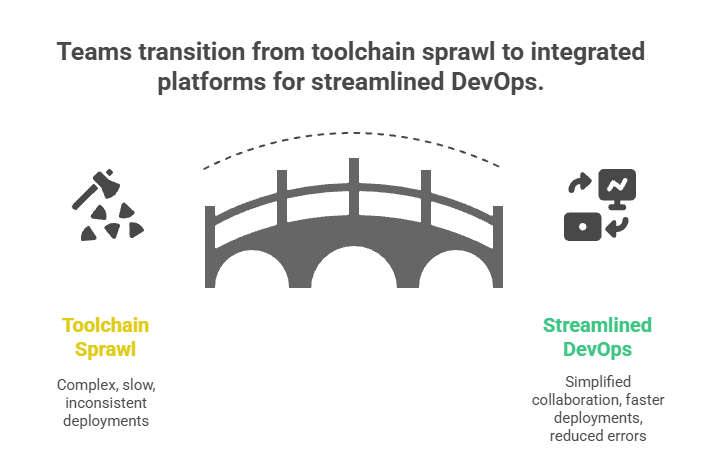 Managing a collection of disparate deployment tools often leads to what is known as “toolchain sprawl.” Teams find themselves spending more time managing and integrating tools than delivering value.
Managing a collection of disparate deployment tools often leads to what is known as “toolchain sprawl.” Teams find themselves spending more time managing and integrating tools than delivering value.
This complexity creates friction, slows down deployments, and makes it difficult to maintain consistency.
As Jez Humble, co-author of Continuous Delivery, noted, “All the goodness of DevOps comes from the ability to safely and quickly push changes through the system.”
For many years, DevOps teams managed deployments using a collection of separate tools, one for CI/CD, another for configuration, another for monitoring, and often custom scripts in between. While this toolchain approach gave flexibility, it also introduced overhead.
The industry trend is now moving toward integrated platforms that combine deployment, automation, monitoring, and scaling into a single system.
By combining deployment, monitoring, rollback, and scaling into a single solution, these platforms eliminate tool sprawl and simplify collaboration.
What makes this new generation of platforms stand out is the use of AI-driven automation to optimise infrastructure and reduce manual intervention. Instead of writing lengthy scripts or managing custom pipelines, teams can rely on automation to handle scaling, resource allocation, and error recovery.
Another driver of this shift is the rise of one-click deployments, which allow applications to move from code to production in minutes. This approach not only saves time but also reduces the likelihood of errors that typically arise in multi-step manual workflows.
Platforms like Kuberns reflect this trend, offering teams a way to streamline their DevOps process without juggling multiple tools.
Conclusion: Building Efficient DevOps Workflows With the Right Deployment Tool
Building efficient DevOps workflows is essential for any modern software team and development teams, and choosing the right deployment tools in DevOps is at the heart of that effort.
From traditional solutions that support blue-green and canary strategies to newer integrated platforms, the landscape has evolved to meet the demands of faster release cycles and more complex infrastructures. The right tool can reduce downtime, simplify compliance, and give teams the confidence to push updates frequently without disrupting users.
As businesses continue to move away from fragmented toolchains, the future of deployment lies in platforms that unify multiple functions into a single workflow.
Features like AI-driven automation and one-click deployments are redefining what teams expect from their toolsets, making the process simpler while still supporting enterprise-level scalability and security. For organisations of all sizes, this shift is not just about adopting new technology, but about enabling a culture of agility and efficiency.
By carefully evaluating deployment needs and embracing solutions that reduce complexity, DevOps teams can build workflows that are both resilient and future-ready.
The focus is no longer on managing tools, but on creating a deployment process that supports innovation, growth, and long-term success.
Check out the One-Click Deployment by Kuberns
Frequently Asked Questions
1. What are deployment tools in DevOps, and why are they important?
Deployment tools in DevOps are applications that automate the software deployment process, including application performance monitoring. They are important because they reduce manual errors, accelerate release cycles, and ensure consistency across environments, ultimately leading to higher software quality and faster delivery of new features.
2. How does automated deployment improve CI/CD pipelines?
Automated deployment removes manual steps from the release process, allowing code changes that pass tests to move quickly into production. This improves CI/CD pipelines by reducing delays, ensuring repeatability, and minimising the risks of human error. For more insights, our blog on CI/CD tools explains how automation shapes modern workflows.
3. Can one tool replace multiple deployment tools?
Yes, Kuberns is an example of this trend, offering a single platform that simplifies deployments with AI automation and one-click deployment workflows.
4. How do automated deployment tools reduce downtime?
Automated deployment tools reduce downtime by enabling strategies like blue-green deployment, which allows for instant traffic switching to a new version. They also facilitate rapid rollback capabilities, allowing teams to quickly revert to a stable version if any performance issues are detected.